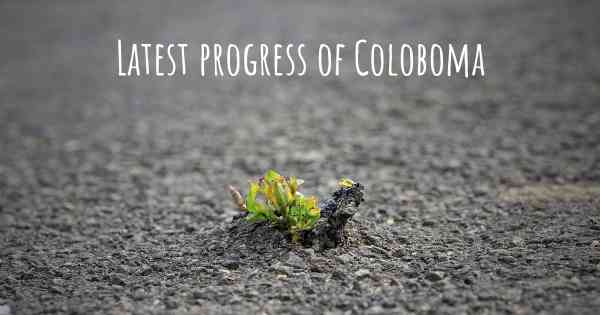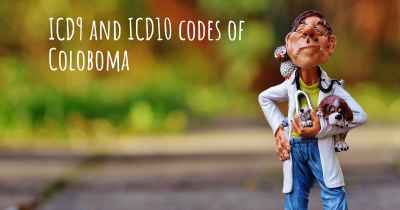What are the latest advances in Coloboma?
Here you can see the latest advances and discoveries made regarding Coloboma.

Coloboma is a rare congenital eye condition characterized by a missing piece of tissue in one or more structures of the eye. It can affect the iris, retina, choroid, optic disc, or eyelid. This condition occurs during fetal development when the structures of the eye fail to close properly. Coloboma can lead to various visual impairments, including blurred vision, sensitivity to light, and reduced visual acuity.
Over the years, significant advancements have been made in understanding and managing coloboma. These advancements have focused on both the genetic and clinical aspects of the condition, leading to improved diagnosis, treatment, and support for affected individuals.
Genetic Research:
One of the major breakthroughs in coloboma research has been the identification of several genes associated with the condition. Scientists have discovered that mutations in certain genes can disrupt the normal development of eye structures, leading to coloboma. This knowledge has allowed for genetic testing and counseling, enabling early detection and intervention.
Furthermore, ongoing research aims to uncover additional genes involved in coloboma development. Identifying these genes will provide a more comprehensive understanding of the condition and potentially lead to targeted therapies in the future.
Improved Diagnosis:
Advancements in imaging technologies have greatly enhanced the diagnosis of coloboma. High-resolution imaging techniques such as optical coherence tomography (OCT) and ultrasound biomicroscopy (UBM) allow for detailed visualization of the eye structures, aiding in the identification and characterization of coloboma.
In addition, genetic testing has become an integral part of the diagnostic process. By analyzing specific genes associated with coloboma, healthcare professionals can confirm the presence of genetic mutations and provide accurate prognoses and personalized treatment plans.
Treatment Options:
While there is currently no cure for coloboma, various treatment options are available to manage its symptoms and associated complications.
Visual Aids: Visual aids such as glasses, contact lenses, or low vision devices can help improve visual acuity and reduce the impact of coloboma on daily activities. These aids are tailored to the individual's specific visual needs and can significantly enhance their quality of life.
Surgical Interventions: In cases where coloboma affects the eyelid or causes significant visual impairment, surgical interventions may be considered. Eyelid reconstruction surgeries can help improve the appearance and function of the eyelid, while other procedures aim to correct structural abnormalities within the eye.
Gene Therapy: Although still in the experimental stage, gene therapy holds promise for the future treatment of coloboma. By delivering functional copies of the mutated genes responsible for coloboma, scientists hope to restore normal eye development and function. However, further research and clinical trials are necessary to determine the safety and efficacy of this approach.
Support and Rehabilitation:
Recognizing the impact of coloboma on individuals and their families, support networks and rehabilitation services have emerged to provide emotional, educational, and practical assistance. These resources aim to empower individuals with coloboma to navigate their visual challenges and lead fulfilling lives.
Conclusion:
The latest advances in coloboma research have significantly contributed to our understanding of the condition, improved diagnostic capabilities, and expanded treatment options. Genetic research has identified key genes involved in coloboma development, while improved imaging techniques aid in accurate diagnosis. Treatment options, including visual aids and surgical interventions, help manage symptoms and associated complications. Furthermore, ongoing research in gene therapy offers hope for potential future treatments. With the support of dedicated healthcare professionals and support networks, individuals with coloboma can lead fulfilling lives despite their visual challenges.








